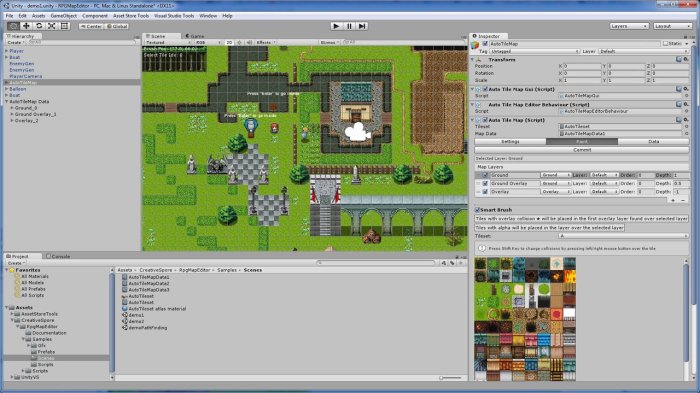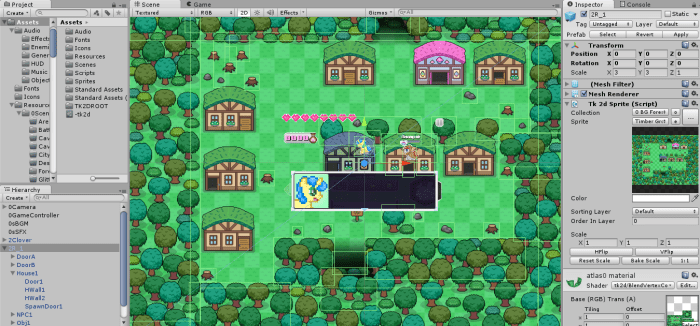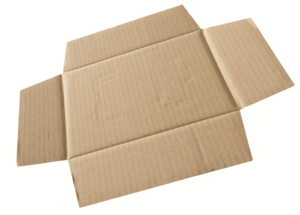
RPG map-making software is revolutionizing how gamers visualize and interact with their favorite realms. These tools are designed to create dynamic and detailed maps that enhance the gaming experience, allowing players to immerse themselves in intricate worlds filled with adventure.
From customizable terrain to easy integration with various game types, RPG map-making software offers a plethora of features that cater to both novice and experienced game developers. With popular programs leading the market, enthusiasts can find just the right tool to bring their imaginative landscapes to life.
Overview of RPG Map-Making Software
RPG map-making software serves as essential tools for game designers, dungeon masters, and players in the role-playing game (RPG) community. These programs empower users to create detailed maps that enhance storytelling and gameplay experiences, allowing for imaginative worlds to be brought to life on a virtual canvas.The primary purpose of RPG map-making software is to facilitate the design of various environments—ranging from dungeons and towns to vast landscapes—suitable for gameplay.
Users can utilize a range of features provided by these applications, contributing to both visual aesthetics and functional gameplay mechanics. Notably, these programs often include user-friendly interfaces, versatile design tools, and extensive asset libraries that simplify the map creation process.
Main Features of RPG Map-Making Software
A variety of features are typically found in RPG map-making software, catering to both novice and experienced map creators. Understanding these features can significantly enhance the user experience and the overall quality of the maps produced.
- User Interface: Most software comes with intuitive drag-and-drop functionality, making it easy to add elements to the map.
- Asset Libraries: Users have access to a collection of pre-made tiles, characters, and objects, streamlining the design process.
- Layering Capabilities: The ability to create multiple layers allows for intricate designs, enabling users to manage background and foreground elements separately.
- Customization Options: Many tools allow for the import or creation of custom assets, ensuring maps can be tailored to individual tastes.
- Export Formats: Finished maps can be exported in various formats (PNG, JPG, etc.), making them easily shareable with players or for use in online platforms.
- Interactive Features: Some programs integrate functionality for creating dynamic elements, such as animated features or interactive tokens for virtual tabletop use.
Popular RPG Map-Making Software
Several RPG map-making software options have gained popularity in the gaming community, each offering unique features suited for different user needs. Notable examples include:
- Dungeon Painter Studio: Known for its vast library of assets and user-friendly interface, it is ideal for both beginners and veterans.
- Inkarnate: A web-based tool that provides powerful features for creating detailed fantasy maps, particularly for world-building.
- Campaign Cartographer 3+: A professional-grade software that excels in producing intricate maps, perfect for serious campaign designers.
- Roll20: While primarily a virtual tabletop platform, it includes map-making capabilities and is widely used to create and share maps during online sessions.
- Wonderdraft: Celebrated for its artistic approach, enabling users to create beautiful and stylized maps with ease.
These software programs not only offer powerful tools for map creation but also foster a creative environment where players can immerse themselves in the worlds they help build.
Integration of RPG Maps in Various Game Types
RPG maps serve as critical tools across various game types, enhancing gameplay through visual representation and strategic elements. These maps provide players with a sense of immersion, guiding them through the narrative and influencing their decision-making processes. Their integration into different gaming genres shows the versatility and importance of mapping in game design.
Utilization of RPG Maps in Board Games
In board games, RPG maps are often used to create immersive environments that players can explore. These maps provide a tactical layout for gameplay, allowing players to visualize the game world and make strategic decisions based on their surroundings. The use of hexagonal grids or modular tiles can add complexity to movement and positioning, drastically impacting the flow of the game.
- Enhanced Strategy: Players can plan their moves or attacks based on the geographic layout, adding layers of strategy to the game. For example, a player may choose to take a high ground advantage on the map, leading to better combat outcomes.
- Thematic Engagement: The artwork and design of RPG maps in board games contribute to the overall theme, pulling players deeper into the game’s narrative. A richly detailed map can evoke emotions and set the tone for the adventure ahead.
- Spatial Awareness: Maps help players understand distances and relationships between locations, making it easier to navigate the game world and anticipate opponents’ actions.
Role of Maps in Card Games
In card games, maps can serve as a visual storytelling mechanism, enhancing the gameplay experience. They provide context for the cards being played, often depicting settings or scenarios that influence the game’s narrative flow.
- Strategic Placement: Mapping out areas where certain cards can be played can unlock strategic possibilities. For instance, in games like “Magic: The Gathering,” the battlefield can be represented as a map, with different zones affecting card abilities.
- Visual Narrative: A thematic map can complement the story told through the cards, enriching the player’s experience. Elements on the map can trigger specific events or actions, bringing the narrative to life.
- Player Interaction: Maps facilitate player interaction by establishing zones for competition or collaboration. Players can strategize based on their positioning on the map, leading to more dynamic gameplay.
Enhancement of Arcade and Coin-Op Games with RPG Maps
In arcade and coin-op games, RPG maps enhance player engagement through interactive environments. These maps serve as the foundation for exploration and challenge within the game, making them integral to player experience.
- Dynamic Environments: Maps in arcade settings often feature evolving landscapes that change based on player actions, encouraging exploration and discovery. For instance, in games like “The Legend of Zelda: A Link to the Past,” players navigate a richly detailed map with various dungeons and towns.
- Level Design: Effective use of maps can guide players through difficulty spikes, pacing the gameplay while maintaining challenge. Well-structured maps help balance gameplay, leading to an enjoyable experience.
- Player Immersion: Maps contribute to a sense of space and immersion, drawing players into the game world. The vibrant graphics and detailed layouts of arcade games can create memorable experiences that keep players coming back.
Future Trends in RPG Map-Making Software

As technology continues to evolve, RPG map-making software is poised to transform significantly. The integration of cutting-edge technologies such as virtual reality (VR) and artificial intelligence (AI) is setting the stage for an exciting future in this domain. These advancements not only enhance the user experience but also expand the creative possibilities for game developers and players alike.
Emerging Technologies Shaping RPG Map-Making
The incorporation of virtual reality and artificial intelligence into RPG map-making software is revolutionizing the way maps are created and experienced. VR allows creators to immerse themselves in a 3D environment, providing a more intuitive understanding of spatial relationships and layouts. This immersion can lead to more detailed and engaging maps. Furthermore, AI technologies are being used to automate repetitive tasks, enabling map-makers to focus on the creative aspects of their work.
For example, AI algorithms can generate terrain features automatically based on specified parameters, reducing the time spent on crafting landscapes.
Impact of Online Gaming Platforms
The rise of online gaming platforms significantly influences RPG map creation and sharing. These platforms foster a community-centric environment where creators can easily upload, share, and collaborate on maps. The ease of access to a global audience allows for rapid feedback and iteration, pushing the boundaries of creativity and innovation. Popular platforms like Roll20 and Foundry allow players and game masters to integrate user-created maps seamlessly into their sessions, increasing the demand for high-quality, shareable content.
The potential for cross-platform compatibility also enhances the usability of maps across different gaming systems.
Influence of Community Feedback on Development
Community feedback plays a crucial role in shaping the features and usability of RPG map-making software. Developers often rely on input from players and creators to understand the tools that work best and areas for improvement. Regular updates and enhancements are frequently driven by community requests, resulting in tools that are more aligned with user needs. For instance, a popular mapping tool may introduce a new feature for dynamic lighting based on user demand, leading to enhanced gameplay experiences.
This collaborative approach not only fosters a sense of ownership among users but also ensures that the software evolves alongside the needs of its community.
Final Summary

In summary, RPG map-making software is an essential tool for anyone looking to elevate their gaming experience through visually engaging and interactive maps. As technology evolves, the future of these programs holds exciting possibilities that will further enrich gameplay and foster creativity within the gaming community.
Commonly Asked Questions
What is RPG map-making software used for?
It is used to create detailed maps for role-playing games, enhancing the visual and interactive aspects of gameplay.
Can I use RPG map-making software for non-RPG games?
Yes, many of these tools can be adapted for various game types, including board games and strategy games.
What features should I look for in RPG map-making software?
Look for user-friendly interfaces, customization options, and compatibility with your game platform.
Are there free RPG map-making software options available?
Yes, there are several free options that offer basic features suitable for beginners.
How can community feedback influence RPG map-making software?
Developers often use feedback to improve features, fix bugs, and introduce new tools that meet user needs.





